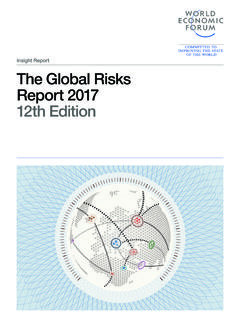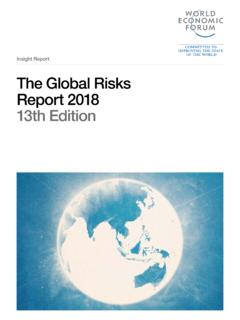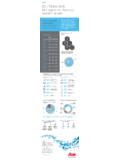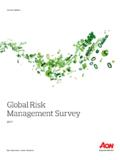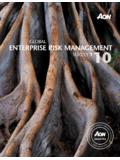Transcription of Middle East respiratory syndrome coronavirus …
1 Middle east respiratory syndrome coronavirus (MERS-CoV) WHO MERS-CoV global Summary and Assessment of Risk 21 July 2017 WHO/MERS/RA global summary Between 2012 and 21 July 2017, 2040 laboratory-confirmed cases of Middle east respiratory syndrome - coronavirus (MERS-CoV) infection were reported to WHO, 82% of whom were reported by the Kingdom of Saudi Arabia (Figure 1). In total, cases have been reported from 27 countries in the Middle east , North Africa, Europe, the United States of America, and Asia (Table 1). Males above the age of 60 with underlying conditions, such as diabetes, hypertension and renal failure, are at a higher risk of severe disease, including death.
2 To date, at least 710 individuals have died (crude CFR ). Since the last global update published on 5 December 2016, 199 laboratory-confirmed cases of MERS-CoV from four countries were reported to WHO (190 from Saudi Arabia, three from Qatar, four from the United Arab Emirates, one from Lebanon and one from Oman), of whom 58 ( ) have died. Among these cases, were male and the median age was 54 years old (IQR 39-65). At the time of writing, 59 of 199 ( ) patients were reported as asymptomatic or having mild disease and 80 ( ) had severe disease and/or died. At least one underlying condition was reported in 114 cases ( ) since the last update, including chronic renal failure ( ), heart disease ( ), diabetes mellitus ( ), and hypertension ( ).
3 One pregnant woman was also reported and, at the time of writing, had lost her baby and was on mechanical ventilation in an ICU. Overall, the epidemiology, transmission patterns, clinical presentation of MERS patients and viral characteristics reported since the last update are consistent with past patterns described in previous WHO risk assessments: MERS-CoV is a zoonotic virus that has repeatedly entered the human population via direct or indirect contact with infected dromedary camels in the Arabian Peninsula. Limited, non-sustained human-to-human transmission in health-care settings continue to occur, primarily in the Kingdom of Saudi Arabia, due to the non-specificity of MERS symptoms resulting in late diagnosis of MERS.
4 The risk of exported cases to areas outside of the Middle east due to travel remains significant. While there have been significant improvements in surveillance for MERS, especially in the Kingdom of Saudi Arabia, and in reacting to suspect clusters, early identification in the community and in health-care systems, compliance with the infection prevention and control measures and contact follow up remain major challenges for MERS outbreak prevention and control. The continued importance of MERS-CoV in health-care settings Since the last global update of 5 December 2016, approximately 31% of cases reported to WHO were associated with transmission in a health-care facility.
5 These cases included health-care workers (40 cases), patients sharing rooms/wards with MERS patients, or family visitors. Though not unexpected, these transmission events continue to be deeply concerning, given that MERS-CoV is still a relatively rare disease about which medical personnel in health-care facilities have low awareness. Globally, awareness for MERS-CoV is low and, because symptoms of MERS-CoV infection are non-specific, initial cases are sometimes easily missed. With improved compliance in infection prevention and control, namely adherence to the standard precautions at all times, human-to-human transmission in health-care facilities can be reduced and possibly eliminated with additional use of transmission-based precautions.
6 Since the last update, several health-care-associated MERS outbreaks have occurred, including the following: An outbreak of MERS occurred in a hospital in Riyadh City, Riyadh in June 2017. From 1 June-3 July 2017, 34 laboratory-confirmed cases were reported to WHO. The initial case was a 47-year-old male who required emergency intubation in the emergency department, prior to identification of being infected with MERS-CoV. Prior to diagnosis, more than 220 health-care workers, patients and visitor contacts were identified for follow-up from contact with this patient. Extensive contact tracing, follow-up and laboratory testing identified an additional 33 cases during this outbreak.
7 Overall, the cases associated with this outbreak had a median age of (IQR 30-54), are predominantly male ( ) and half were health care workers ( ). Eleven patients were classified as having severe disease, of whom 7 died, and 22 were asymptomatic. One case from the cluster described above also sought treatment (renal dialysis) at a second health-care facility in Riyadh City, Riyadh in June 2017. Within this health-care facility, 5 additional cases were identified. Transmission occurred among three household contacts, one patient contact in the hospital, and one health-care worker contact. Middle east respiratory syndrome coronavirus (MERS-CoV) Summary of Current Situation 21 July 2017 2 Also in June 2017, an unrelated MERS cluster occurred in a hospital in Riyadh City, Riyadh.
8 This cluster involved nine cases: the first case who reported direct contact to dromedary camels (occupational exposure as a butcher) and eight health-care worker contacts (4 were reported as asymptomatic and 4 reported mild disease). In March and April 2017, two unlinked clusters of MERS occurred at the same hospital in Wadi Aldwaser city, Riyadh Region. A cluster of MERS occurred in March 2017. This cluster included 10 laboratory-confirmed patients, 40% of whom were male, 20% of whom were health-care workers and 40% of whom were reported as asymptomatic. The source of infection in the initially-identified patient was under investigation and transmission occurred in a renal dialysis unit within this hospital and between household contacts.
9 A cluster of MERS occurred in April 2017. This cluster involved five laboratory-confirmed cases: the initial case, three household contacts and one health-care worker. The apparent increase in the number of asymptomatic contacts identified in health-care settings are being identified due to a policy change by the Ministry of Health of the Kingdom of Saudi Arabia, in which all high-risk contacts are tested for MERS-CoV regardless of the development of symptoms. Drivers of transmission and the exact modes of transmission in health-care settings have not been articulated and are currently the focus of collaborative scientific research.
10 From observational studies, transmission in health-care settings is believed to have occurred before adequate infection prevention and control procedures were applied and cases were isolated. Investigations at the time of the outbreaks indicate that aerosolizing procedures conducted in crowded emergency departments or medical wards with sub-optimal infection prevention and control measures in place resulted in human-to-human transmission and environmental contamination. Community-acquired cases and reported links to dromedary camels Since the last update, 56 human cases are believed to have been infected in the community.










